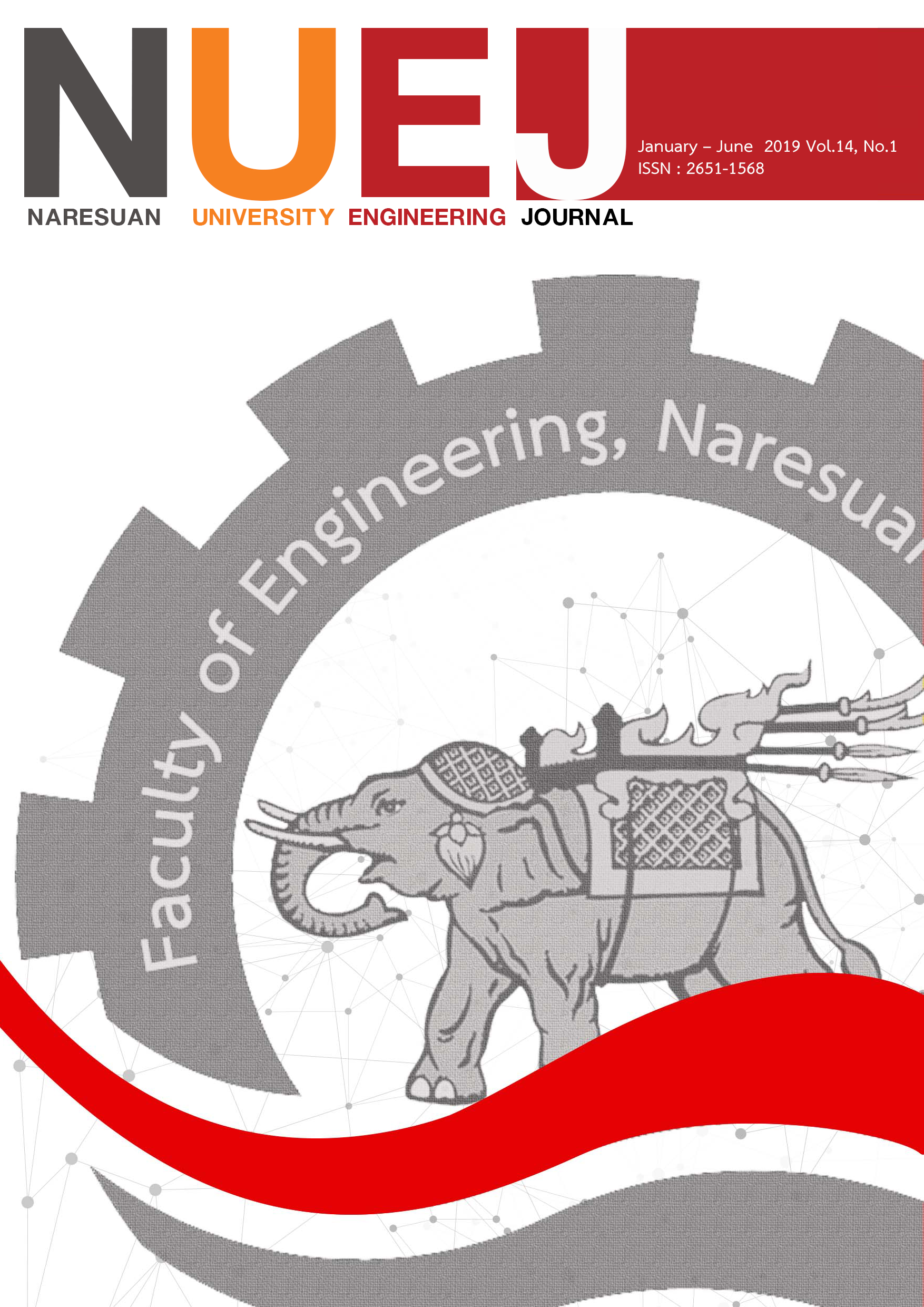การประเมินความปลอดภัยทางถนนภายในสถานศึกษาที่พึ่งชุมชน กรณีศึกษามหาวิทยาลัยราชภัฏพิบูลสงคราม ส่วนทะเลแก้ว จังหวัดพิษณุโลก
Main Article Content
บทคัดย่อ
การประเมินความปลอดภัยทางถนนภายในมหาวิทยาลัยราชภัฏพิบูลสงคราม จัดทำขึ้นด้วยวัตถุประสงค์เพื่อวิเคราะห์ปัจจัยเสี่ยงที่อาจเป็นสาเหตุนำไปสู่การเกิดอุบัติแก่บุคลากร นักศึกษา และประชาชนทั่วไปที่เดินทางสัญจรผ่านโครงข่ายทางถนนของมหาวิทยาลัย ซึ่งได้คัดเลือกตำแหน่งในการศึกษาปริมาณการเข้าออกของยานพาหนะทั้ง 3 ประตู การศึกษาความเร็วและความปลอดภัยทางถนนทั้งหมด 6 จุดเพื่อเปรียบเทียบตำแหน่งที่เกิดอุบัติเหตุและยังไม่เคยเกิดมาก่อน จากการศึกษา พบว่า ประตู 2 มีปริมาณจราจรทางเข้าออกสูงสุด 11,983 คัน/วัน หรือ 5,522 PCU/วัน ด้านความเร็วในการเดินทางของบุคลากร นักศึกษา และบุคคลภายนอก พบว่า ความเร็วที่ใช้บริเวณทางโค้งเฉลี่ยเท่ากับ 33.03 กม./ชม. และในทางตรงเฉลี่ย 37.01 กม./ชม. ซึ่งเกินความเร็วปลอดภัยที่แนะนำในชุมชนที่ 30 กม./ชม. ส่วนประเด็นในด้านปัจจัยเสี่ยงทางถนน การตรวจสอบความปลอดภัยทางถนนพบปัจจัยเสี่ยงและข้อบกพร่องหลายด้าน เช่น ระยะมองเห็นที่ไม่ปลอดภัย เครื่องหมายจราจรบนพื้นทางที่ไม่ได้มาตรฐาน การใส่ป้ายเตือนทางโค้งไม่เหมาะสม ไม่มีป้ายความเร็วก่อนเข้าบริเวณทางโค้ง และไฟฟ้าแสงสว่างไม่เพียงพอ ซึ่งทั้งหมดล้วนเป็นความเสี่ยงที่อาจนำไปสู่การเกิดอุบัติเหตุที่มีระดับความรุนแรงได้ โดยทางคณะผู้วิจัยได้จัดทำรายงานประเด็นปัญหาที่ตรวจพบ พร้อมทั้งแนวทางแก้ไขปัญหาเพื่อเสนอแก่ผู้ที่มีส่วนรับผิดชอบ ตลอดจนผู้บริหารระดับสูงของมหาวิทยาลัย อันนำไปสู่ประโยชน์ ในการออกนโยบายด้านความปลอดภัยทางถนนภายในมหาวิทยาลัย
Article Details
References
[2] WHO. (2018). Global status report on road safety 2018. Geneva, Switzerland.
[3] Thai RSC. (2018). Accident Locations in Specified Range. Retrieved January 21, 2018, from http://www.thairsc.com., access on (in Thai)
[4] Boontob, N. (2016). Treatment of Hazardous Location. Retrieved November 6, 2017, from https://www.rswgsthai.com., access on (in Thai)
[5] Austroads. (2002). Road Safety Audit Guide 2nd Edition. Austroads, Melbourne, Australia.
[6] Reason, J. (1990). Human Error. Cambridge University Press, Cambridge, United Kingdom.
[7] Islam, M.B., and Kanitpong, K. (2008). Identification of Factors in Road Accidents through In-Depth Accident Analysis. IATSS Research. Volume 32, Issue 2, 58-67.
[8] Evans, L. (1991). Traffic Safety and the Driver. Van Nostrand Reinhold. New York, 92 – 93.
[9] Qureshi, I.A., and Lu, H. (2007). Urban Transport and Sustainable Transport Strategies: A Case Study of Karachi, Pakistan. Tsinghua Science and Technology. Volume 12, Number 3, June 2007, 309–317.
[10] Steg, L., and Robert, G. (2005). Sustainable Transportation and Quality of Life. Journal of Transport Geography. 13, 59-69.
[11] Marta, D., Smart, W., Dr Saffron, D., Hamilton, B., and Bhatnagar, Y. (2011). Road safety assessment methods: deciding which one to use. Australasian Road Safety Research, Policing and Education Conference 2011, 1-8.
[12] Settasuwacha, D., Pochan, J., & Wichitphongsa, W. (2016). The Study of Road Safety in Small Urban Area A Case Study of Pai District, Mae Hongson Province. Journal of Srivanalai Vijai, 6(1), 129-141. (in Thai)
[13] Currin, T. R. (2001). Introduction to Traffic Engineering: A Manual for Data Collection and Analysis. Brooks/Cole Publishing, Pacific Grove, California, USA.
[14] Roess, P.R., Prassas, E.S. and McShane, W.R. (2004). Traffic Engineering, 3rd Edition. New Jersey, USA: Pearson Prentice Hall.
[15] Yamane, T. (1967). Statistics, An Introductory Analysis, 2nd Edition. New York: Harper and Row.
[16] Ratanavarah, V. and Jaritngam, S. (2011). Transportation Engineering. Chanmuang Press, Hat Yai, Songkhla, 30. (in Thai)
[17] Taneerananon, P., Tanaboribun, Y. and Srisakda, L. (2005). Road Safety Audit: A Practical Guide for Thailand. Faculty of Engineering, Prince of Songkla University, Hat Yai, Songkhla. (in Thai)
[18] Federal Highway Administration. (2006). FHWA Road Safety Audit Guidelines. Federal Highway Administration, United States Department of Transportation, Washington, D.C., USA.
[19] Department of Highways. (2005). Road Safety Audit for Existing Roads. Ministry of Transport. (in Thai)
[20] Settasuwacha, D., Pochan, J., & Wichitphongsa, W. (2018). Road Safety Audit of Pibulsongkram Rajabhat University. National Conference (Proceeding) “Pibulresearch” 4th Thailand 4.0 Innovation and Research for Sustainable Development. 155. (in Thai)
[21] Asian Development Bank (2018). CAREC Road Safety Engineering Manual 1 ROAD SAFETY AUDIT. Asian Development Bank, ADB Avenue, Metro Manila, Philippines.
[22] Robert, M. (1999). Road Safety Audit the Traffic Safety Toolbox: A Primer on Traffic Safety. Institute of Transportation Engineers, Washington, D.C., USA.
[23] Department of Rural Roads (2009). Standard Drawing for Local Government Organizations. Ministry of Transport. (in Thai)
[24] Department of Highways (2005). Traffic Engineering. Ministry of Transport. (in Thai)
[25] Robert, M. (1999). Road Safety Audit the Traffic Safety Toolbox: A Primer on Traffic Safety. Institute of Transportation Engineers, Washington, D.C., USA.
[26] Wrisberg, J., Nilsson, P.K. (1996). Safety Audit in Denmark: A Cost – Effective Activity. Danish Road Directorate, Copenhagen, Denmark.
[27] Robert, M. (2005). Road Safety Audits – Practice in Australia and New Zealand. Institute of Transportation Engineers, Washington, D.C., USA.
[28] ThaiRoads Foundation (2013). Speed. Retrieved January 21, 2018, from http://trso.thairoads.org/statistic/risk/detail/5066., access on (in Thai).
[29] Department of Highways (2011). Gerneral Specification for Street Lighting. Ministry of Transport. (in Thai)
[30] Pochan, J., Settasuwacha, D., Wichitphongsa, W., & Phongsaksri, J. (2016). An Analysis of the Proportion of Investment by the Mission for Excellence University Using Pair-Wise Comparison and Analytic Hierarchy Process. Journal of Srivanalai Vijai, 6(2), 1-10. (in Thai)

